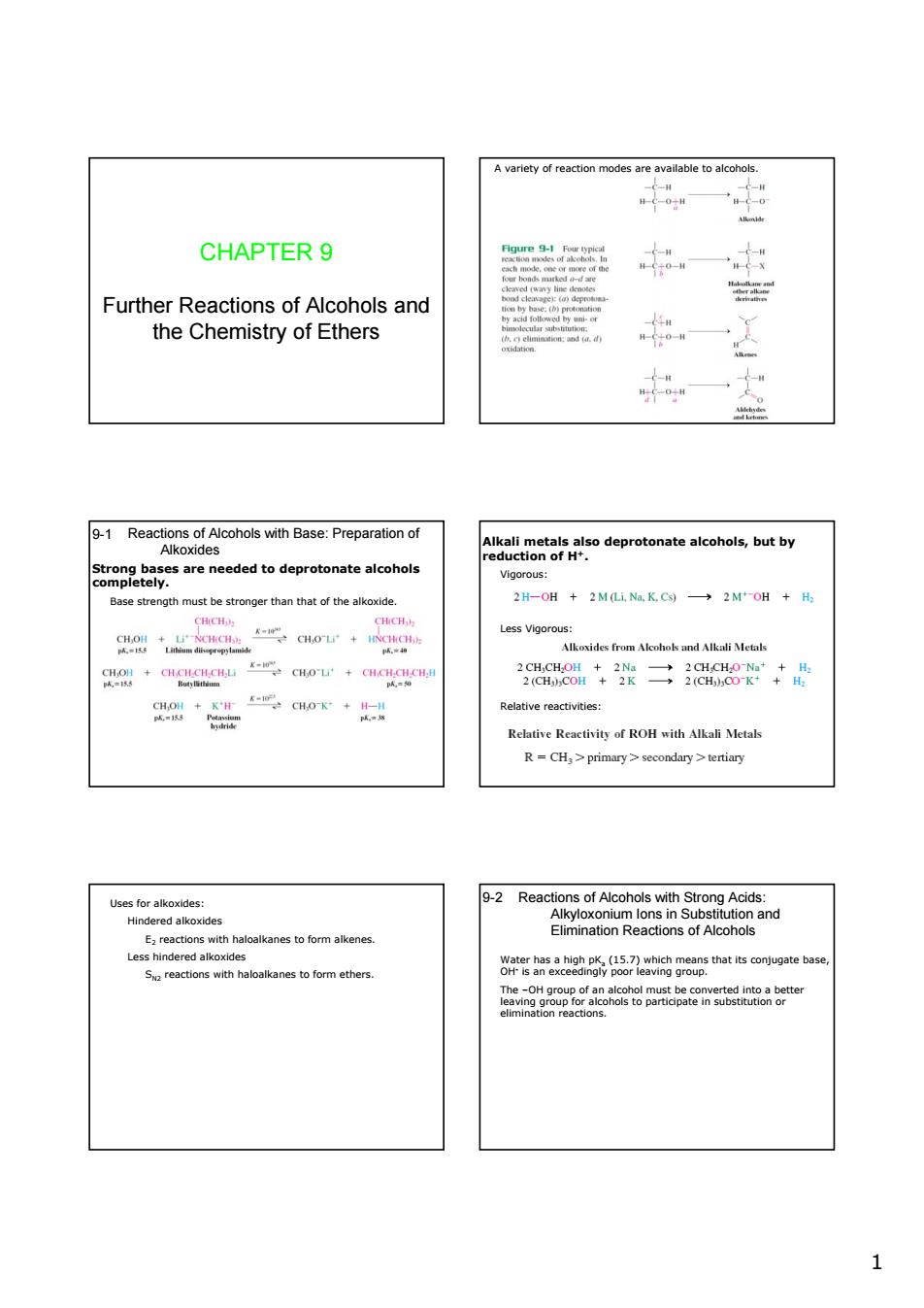正在加载图片...

A variety of reaction modes are ble to alcoho CHAPTER 9 一 Further Reactions of Alcohols and the Chemistry of Ethers 一 一大 -1 Reactions of Alcohols with Base:Preparation of edtodeprotonate ealoetetsodeprotonatealcoholsbutby 2H-OH 2M(Li,Na.K.C)+H tfatrtund auliitk 20+次二 Relative Reactivity of ROH with Alkali Mctals R-CH,primary secondary tertiary -2 Reactions of Acohols nesto form aenes. S reactions with haloalkanes to form ethers that tcon 82e88nea 11 CHAPTER 9 Further Reactions of Alcohols and the Chemistry of Ethers A variety of reaction modes are available to alcohols. Reactions of Alcohols with Base: Preparation of Alkoxides 9-1 Strong bases are needed to deprotonate alcohols completely. Base strength must be stronger than that of the alkoxide. Alkali metals also deprotonate alcohols, but by reduction of H+. Vigorous: Less Vigorous: Relative reactivities: Uses for alkoxides: Hindered alkoxides E2 reactions with haloalkanes to form alkenes. Less hindered alkoxides SN2 reactions with haloalkanes to form ethers. Reactions of Alcohols with Strong Acids: Alkyloxonium Ions in Substitution and Elimination Reactions of Alcohols 9-2 Water has a high pKa (15.7) which means that its conjugate base, OH- is an exceedingly poor leaving group. The –OH group of an alcohol must be converted into a better leaving group for alcohols to participate in substitution or elimination reactions